As editor-in-chief of Place de l’Opera, I have the privilege of going to the opera a lot in the Netherlands and abroad. I rarely write reviews myself, with one small exception. I usually leave that to our reviewers, who do that for you week in and week out. I’m more into the interviews or background stories and I now want to give you a glimpse into what came my way in a week.
Fedora
It started last week on Saturday with a special private visit with my partner to New York, where I also went to the Met to Fedora to see.
A visit to the Met is always an experience. Each time I am impressed by the entrance, the square with the fountains, the immense staircase with on the left and right on the first floor the Chagall murals he made for the opening of the new Met and the production of The Magic Flute in 1966, the production in which Cristina Deutekom achieved such success as Queen of the Night.
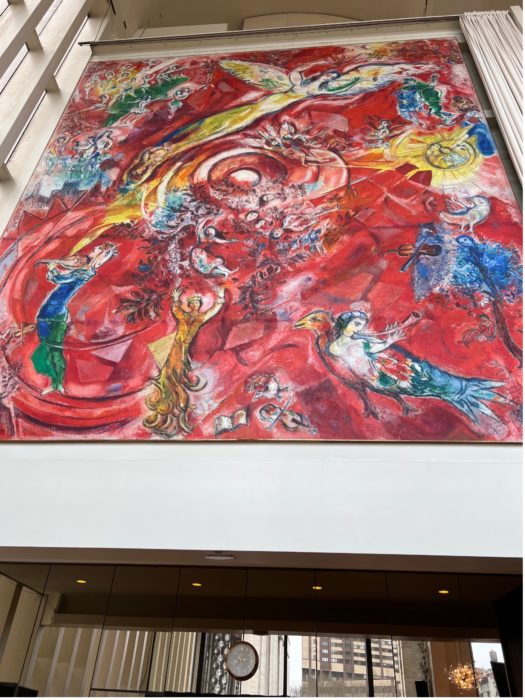
While colleague Peter Franken was in the Pathé cinema in Rotterdam, I was allowed to take a seat in the immense hall of the Metropolitan Opera in New York. The live in HD performance would be broadcast to more than a thousand movie theaters and from my seat I saw at least 6 cameras that were supposed to record and beam the action. As is often the case with the LIVE in HD performances, the cinema audience precedes the people in the room, because after all the beautiful introductory stories that remained invisible to us in New York, the Maestro only came ‘to the pit’, around 13:15 local time. Peter and all the other moviegoers got to see that introduction and although I promised to wave, apparently I didn’t go all over the world.
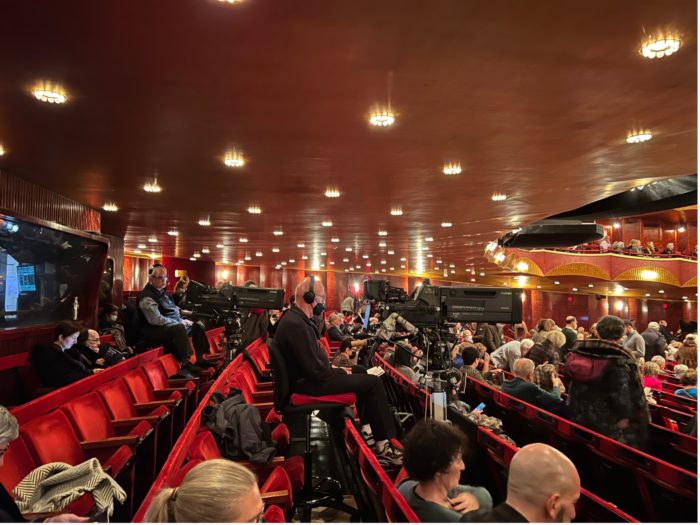
I saw a rush about realistic Fedora directed by David McVicar. While I certainly love what some today call “libretto-faithful productions,” the absurdity of the story of Fedora very impressed with the production. Everything is grand and compelling, the singers do their best to dive into the characters, but how many misunderstandings and letters crossed with all the deadly consequences can you imagine as 21stecentury theatergoer seriously? Perhaps an intermediate form in which some abstraction could benefit the interpretation of the otherwise very pompous and implausible narratives, is a better way to present these works. Be that as it may, Sonya Yoncheva sang with her now well-known beautiful voice, but unfortunately also with her equally well-known spacious vibrato and somewhat hypothermic interpretation. Piotr Beczala makes everything out of the role, including a small overdose of sobs and “Italian or Slavic” temperament.
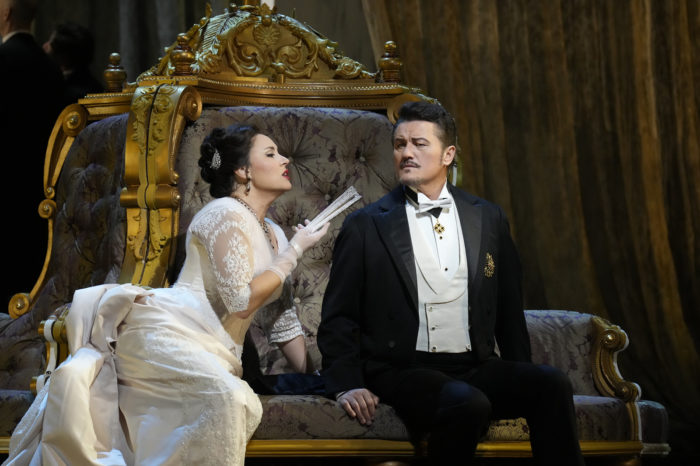
Peter Franken already described everything in his review, except what goes on behind the scenes at the Met. Although the theater has been modernized in many ways since it opened in 1966, the theater technique is traditional in some respects. An army of policemen pulls and rolls with set pieces as if we are still in the time of Fedora for that matter. The moviegoers could also see this during the intermission of the opera.
The audience is also on the traditional side. Many of the New York ladies still appear at the opera in full regalia and because their drivers are often ready with their engines roaring, the fur-clad and jeweled opera lovers usually leave the theater as quickly as possible and the open cloths are relative. short.
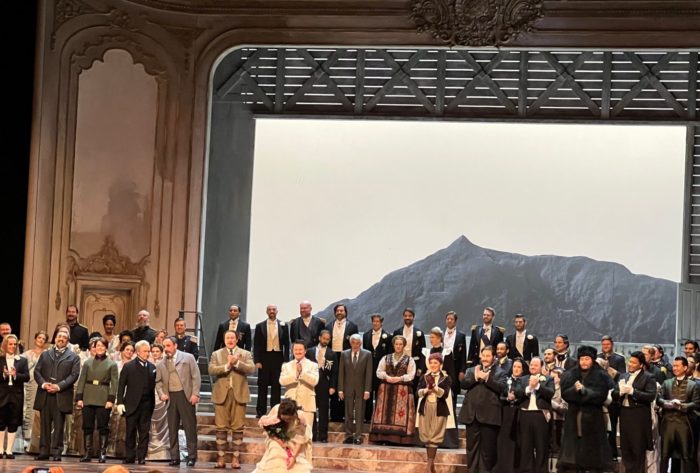
I posed one more time at the poster of Fedora and popped into the pub for a Saturday afternoon drink.
Julius Caesar
On Monday I was already in Amsterdam for the premiere Julius Caesar of Dutch National Opera. Place de l’Opera (Martin Toet) also wrote a review about that, so I will limit myself to a few comments. Which I after the exaggerated realism of Fedora almost pined for a possibly provocative, abstract production by Calixto Bieito, I saw an uninspired, poorly and lazily directed performance. Very expensive school play, in a beautiful and impressive setting, with weak, flat and nonsensical ‘jokes’ and banalities that certainly did not do the job enough. Musically it was fine with a side note here and there, but scenically it was a low point. Ok, I chuckled once or twice, but was angry that a supposedly talented ‘enfant terrible’ of the opera world had, in my eyes, finished off with a ‘Jantje van Leiden’. Emmanuelle Haïm and her musicians and soloists provide some musical gems, but they too could not cope with Bieito’s non-direction.
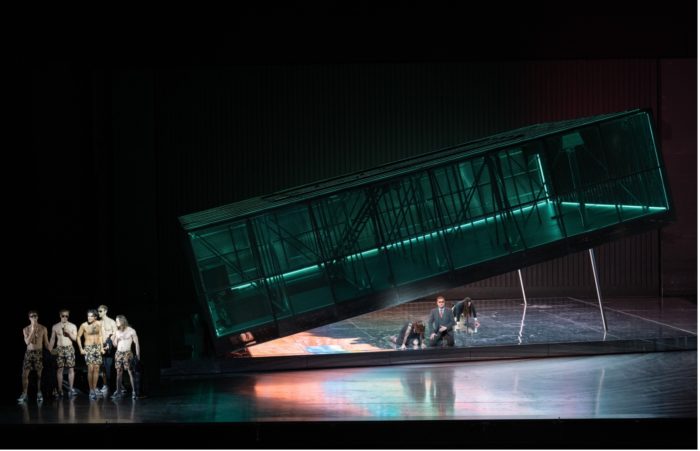
Schaunard Award
On Tuesday I had the great pleasure with some of my colleagues to hand over the Schaunard Award to Jordi Kooiman for 12.5 years at the cradle and at the helm of Place de l’Opera.
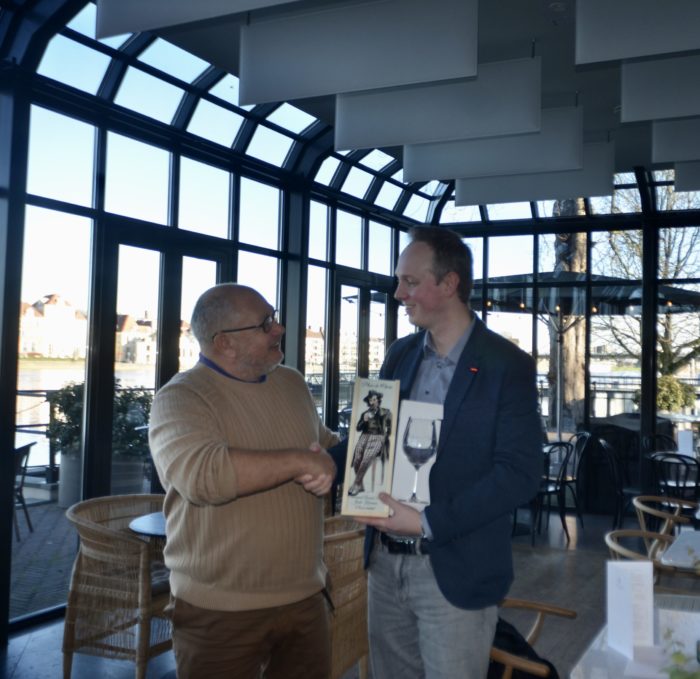
Renée Fleming and Evgeny Kissin
Wednesday evening I attended a recital in the Concertgebouw by two giants in their field; pianist Evgeny Kissin was the pianist, Renée Fleming the singer. Together they created a grand, but intimate evening that once again proved that songs without exaggerated operatic volume also come into their own in the Grote Zaal. In the hands of musical superstars, who clearly shared a lot with each other, the songs and piano pieces by Liszt, Schubert, Duparc and Rachmaninov sounded like pearls on a sparkling string full of detail and beauty. Kissin knows how to conjure up sounds from the piano, which resound in the smallest pianissimo to the far corners of the hall and never sound coarse or exaggerated in its loudest fortes. In addition, he knows how to find so many nuances and dynamic differences in the solo pieces and song accompaniments, that each work has a richness and splendor that I have not heard very often.
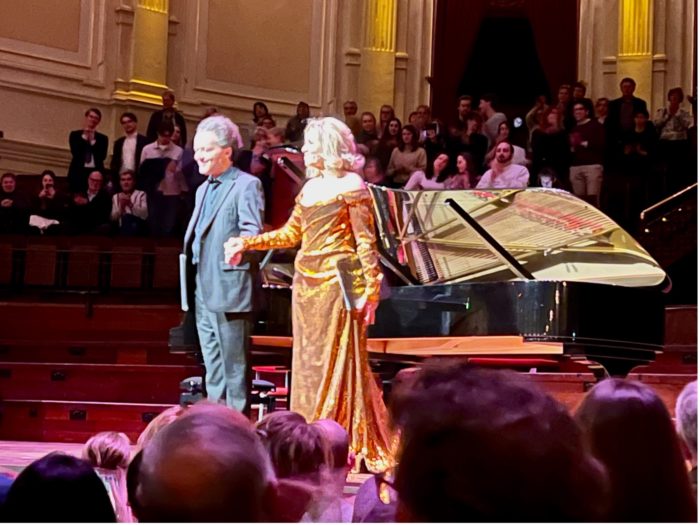
Renée Fleming, after a somewhat woolly start in Schubert’s ‘Suleika’, grew and blossomed along with those waves of piano beauty and, just like Kissin, knew how to provide every song with every conceivable color and sound. Her German and French songs were perfumed where necessary, lived through and still with a beautiful radiant soprano voice. In Rachmaninov (and especially in ‘A dream’) there was room for a bit more volume in the climaxes and Renée Fleming, now almost 64 years old, delivered that effortlessly. The French songs seemed to have been written for the American soprano and her performances were more than special. ‘Oh quand je dors’ by Listz and ‘Extase’ by Duparc were really beautiful and the duo seemed to have one thought about the works together. A true party and a special evening, which resulted in three more encores after the official program. During Corona Kissin and Fleming had streamed Schubert’s ‘Ave Maria’ as a comforting song for the world, thousands of miles apart. Now the song came with a wish for peace for our time ‘which is now more than necessary’ as Fleming himself announced it and now sounded together in one hall. Slower than I’ve ever heard it, but still moving and moving, confident in each other! The last encore, how could it be otherwise, was ‘Tomorrow’ by Richard Strauss. It became a hushed, deeply moved climax and the audience hardly dared to burst into an ovation after the last sounds of the piano. The silence before that storm of applause and bravos was perhaps the most beautiful silence I have heard since the ‘Winterreise’ by Dietrich Fischer Dieskau and Alfred Brendel in 1984 in the same room.
Ballet in between
On Thursday I had a beautiful ballet evening in the Filmhallen, with ‘Red Roses and Toritillas’ by Christopher Wheeldon from the Royal Opera House in London and even there ‘opera’ passed by because the last scene was beautifully sung by mezzo-soprano Siân Griffiths.
DNOA Tripple bill.
Friday was a rest day apart from editing and some writing and Saturday I went to Amare in The Hague where I enjoyed an evening by the Dutch National Opera Academy. The studio members presented themselves in two works by Haydn and one by Krenek (Peter Franken wrote about it).
In the cantata ‘Arianna a Naxos’, the luxury of pianist Peter Nilsson, who on the forte piano provided a warm and yet pointed accompaniment to mezzo-soprano Sterre Decru, provided a stylish basis on which the generous and warm voice of the singer and her great musicality could flourish. With impressive and moving silent counterplay from none other than tenor and former artistic director of DNOA Alexander Oliver, it turned out to be a beautiful and impressive performance. Deep despair and loneliness beautifully expressed in a stylish, simple staging by a great talent. With some small vocal improvements, Sterre Decru can hopefully grow into a very big star!
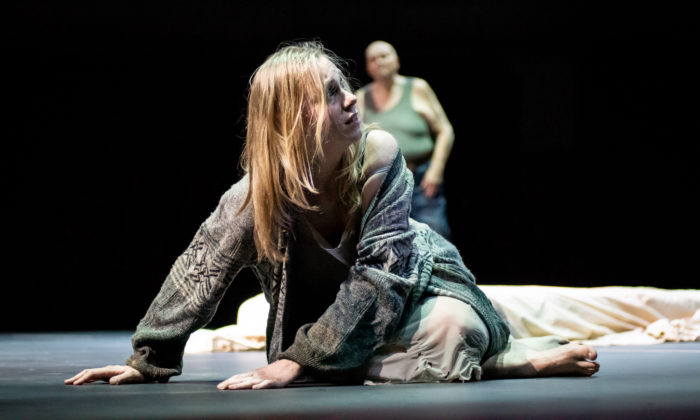
Krenek’s difficult, funny and somewhat forced chamber opera What price confidence? was performed lively and sparkling. Director Michiel Dijkema had taught the young soloists quite a few stage skills, which is exactly what these kinds of productions are for. Pianist Daan Boertien was a great accompanist on the modern grand piano.
After the intermission came the main course, an opera by Haydn, The uninhabited island, for which the powers of the Orchestra of the Eighteenth Century and Kenneth Montgomery were employed. What a luxury and wealth for this upcoming opera singer to be able to perform with these people and, above all, to be able to rehearse. Earlier we wrote what Kenneth Montgomery and director Michiel Dijkam brought with them in terms of knowledge and experience and all singers eagerly made use of that. The difficult singing of accompanied recitatives, without monitors to see the conductor, but sailing blindly on the trust between conductor and singer, went very well for all singers and it was the perfect conclusion to a sparkling evening in The Hague.
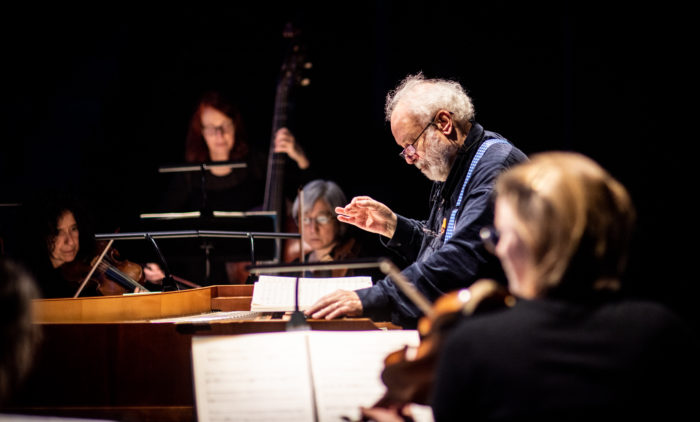
I ended the week by reading, editing and supplementing the reviews of our employees and still secretly listening to other operas on Youtube! As if I hadn’t heard and seen enough already. But yes, it is my great love and this week was another wonderful loving one!
Encore
Franz Schubert’s ‘Ave Maria’ by Renée Fleming and Evgeny Kissin in 2020


